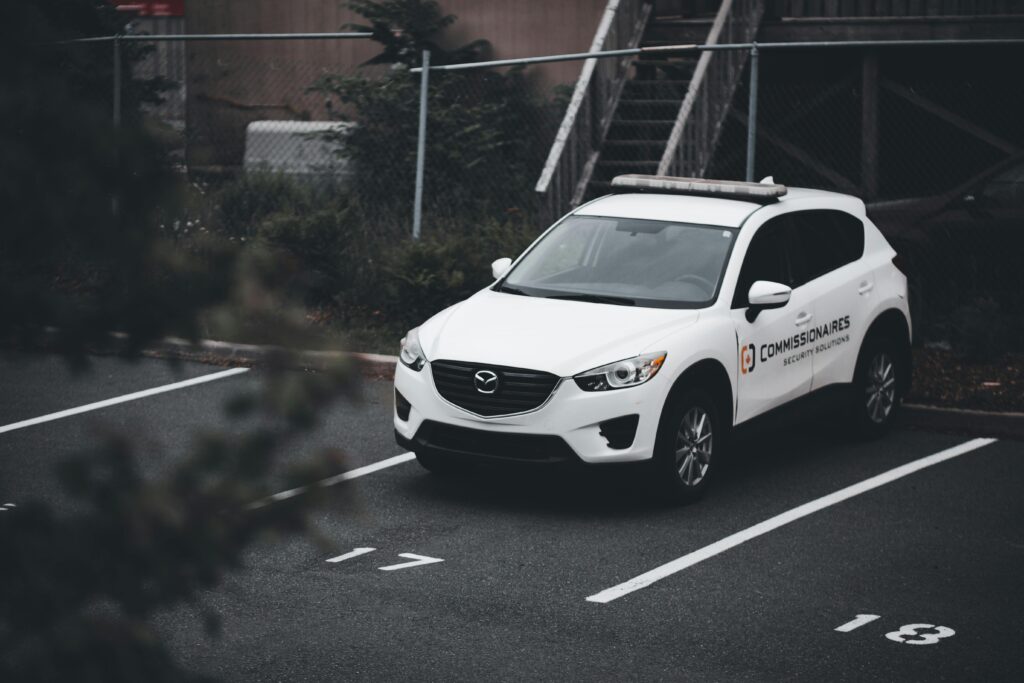Ah, Fringe Benefit Tax (FBT)—the employer’s favorite topic… said no one ever. But if your business has a work-related vehicle, you need to understand the rules, or Inland Revenue (IRD) might come knocking.
FBT applies when a company fleet is used for personal use of a company car, but exemptions exist. Employer tax compliance isn’t just about ticking boxes—it’s about knowing how to minimize taxable benefits and keep more money in your business.
Here’s the deal: FBT calculation methods vary, exemptions aren’t as straightforward as slapping a logo on the side, and business mileage tracking could save you thousands. No logbook requirements? Big mistake.
We’ll break down how FBT offsets your tax deduction, the lease vs. ownership debate, and when to worry about FBT compliance audits. Because let’s be honest—if you’re reading this, you’d rather not get a surprise bill from IRD. Let’s dive in. 🚗💨
Understanding FBT on Company Vehicles
What is Fringe Benefit Tax (FBT)?
Why was FBT introduced?
FBT was introduced to stop tax-free perks from slipping through the cracks. Before its implementation, businesses could provide employees with taxable benefits—like a company car for personal use—without declaring it as income. IRD wasn’t thrilled about this loophole, so they introduced FBT to level the playing field.
How does FBT apply to business vehicles?
If an employee (or shareholder employee) uses a business vehicle for personal use, that’s considered a taxable benefit. The key distinction? Work-related vehicles that meet strict exemption criteria don’t attract FBT.
💡 Want to know how FBT compares to GST? Check out our guide on FBT and GST: Differences, Exemptions, and Common Mistakes.**
Examples of taxable vs. non-taxable car use
| Car Use Type | Example | FBT Applies? |
|---|---|---|
| Sign-written van strictly used for deliveries, parked at the office overnight | A courier company owns a van with permanent branding, used only for deliveries and left at the depot after work. | ❌ Exempt |
| Work-related vehicle (ute or truck) meeting IRD’s private-use restrictions | A tradie’s ute with tool racks and a company logo, only used for job sites and work-related travel. | ❌ Exempt |
| Company car given to an employee for unlimited use, including weekends | An employee receives a sedan as a company perk and uses it freely for personal errands. | ✅ FBT Applies |
| Vehicle garaged at an employee’s home, even if primarily for business | A business consultant drives a company car home each night and occasionally uses it for personal trips. | ✅ FBT Applies |
| Self-employed consultant leasing a business vehicle but using it personally | John, a consultant, takes his company car home daily and on weekend getaways. | ✅ FBT Applies (unless strictly work-related) |

Who Pays FBT and When?
If your business provides a company car, guess what? You’re on the hook for Fringe Benefit Tax (FBT). It’s not the employee’s problem—it’s yours. If a car is available for personal use, you need to register for FBT, track its usage, and file returns either quarterly or annually. Sounds like a headache? It can be—especially if you’re not keeping good records of business mileage. Mess it up, and you could be hit with a surprise tax bill from Inland Revenue (IRD).
For regular employees, it’s pretty straightforward: private use = FBT applies. But shareholder employees? That’s where things get messy. IRD keeps a close eye on business owners who think labeling a car as a “business vehicle” makes it FBT-free. Spoiler alert: it doesn’t. If it’s parked at home and used for personal trips, it’s taxable—no matter what you tell yourself.
And here’s the kicker: FBT on motor vehicles is 49.25%. That’s nearly half the taxable value gone in tax. Let that sink in. Without proper tracking, you’re either overpaying or risking an IRD audit—neither of which is fun.
🚗 Still deciding whether to lease or buy your business vehicle? Read our guide on Business Vehicle Lease or Buy? What’s Best for Your Company?
How is FBT Calculated?
FBT Rates & Valuation Methods
FBT can be calculated using two methods:
- Cost Price Method – Based on the original purchase price of the vehicle.
- Tax Value Method – Based on the depreciated value of the vehicle (lower taxable amount over time).
The standard FBT rate for motor vehicles is 49.25%, which applies to most businesses. However, some qualify for lower rates if they meet certain conditions.
Example FBT Calculation
Let’s say a business purchases a vehicle for $40,000 and provides it to an employee for personal and business use.
- Annual Taxable Value: 20% of cost price = $8,000
- FBT Rate: 49.25%
- FBT Payable per Year: $3,940
That’s almost $4,000 per year per vehicle in extra tax! If you’re running a company fleet, these costs add up fast.
🚙 Want to know the best way to buy a car for business? Check out our article on What is the Best Way to Buy a Car for Business?

Exemptions & How to Avoid Unnecessary FBT
FBT on company cars isn’t always a given—if you know the right exemptions, you could legally avoid paying it altogether. But here’s the thing: slapping a logo on your car doesn’t magically make it tax-free. IRD has strict rules on what qualifies as a work-related vehicle, and if you get it wrong, expect a hefty tax bill.
Let’s break down the main exemptions and some of the biggest misconceptions that trip up business owners.
Work-Related Vehicle Exemption
Not every business vehicle is automatically subject to FBT. If your car meets IRD’s work-related vehicle exemption, you’re in the clear. But it’s not as simple as calling it a work vehicle—you have to prove it.
Here’s what actually qualifies for an FBT exemption:
| Condition | Requirement for FBT Exemption |
|---|---|
| Not a car | Must be a ute, van, truck, or another type of commercial vehicle. Sedans, hatchbacks, and SUVs are NOT exempt. |
| Permanent signwriting | The business name and logo must be permanently affixed—no magnets or removable decals. |
| Limited private use | Employees can’t use the vehicle for personal trips, except for minimal travel like home-to-work journeys (if necessary for business reasons). |
| Strict employer policies | The company must have a written policy prohibiting personal use and enforce it. |
| Vehicle use tracking | Logs must show the vehicle is primarily used for business, not personal errands. |
Double-Cab Utes – Are They Really Exempt?
The double-cab ute loophole is one of the most misunderstood exemptions. Many businesses assume that because utes aren’t cars, they don’t attract FBT. Wrong. If an employee takes the ute home and can use it freely on weekends, FBT applies.
The exemption only works if:
- The ute is heavily modified for work (e.g., tool racks, no back seats).
- The employee can’t use it for non-work trips.
- There’s a written policy restricting private use (and it’s actually followed).
Other Exemptions & Special Cases
Not all vehicles fit into work-related exemptions, but there are other ways to avoid FBT.
Daily Exemptions – Temporary Vehicle Use
If an employee occasionally uses a company car for personal reasons, you may not need to pay FBT. This only applies if:
- The vehicle is used for less than 24 hours at a time.
- It’s not available for regular private use.
- It’s a one-off or irregular situation (e.g., a staff member takes a car home once for an emergency).
FBT Rules for Shareholder Employees
Shareholder employees—business owners who work in their own company—are under extra scrutiny. IRD knows that many small business owners try to dodge FBT by claiming their car is a work vehicle while using it personally.
If you’re a shareholder employee using a company vehicle, make sure you:
- Prove it’s for work with logs and clear policies.
- Don’t use it for personal trips unless you’re paying FBT on them.
- Document vehicle usage properly—IRD audits aren’t fun.
Electric Vehicles – Do Different Rules Apply?
Thinking of switching to an EV for tax benefits? Smart move. But don’t assume FBT doesn’t apply.
Here’s the deal: Electric company cars follow the same FBT rules as regular cars. However, low-emission vehicles may qualify for lower FBT rates if used as part of a salary package. If you’re using an EV for business, you still need to track personal use, just like with petrol cars.

Common Misconceptions About FBT Exemptions
Let’s clear up some myths before IRD does it for you with a surprise tax bill. Just because a company logo is slapped on the side of a car doesn’t mean it’s magically FBT-free. If it’s available for personal use, it’s taxable—signwriting or not. Parking a car at the office overnight? That doesn’t always get you off the hook either.
If an employee can still take it for a weekend getaway, IRD won’t care where it sleeps during the week. And then there’s the double-cab ute myth—some businesses think they’re automatically exempt because they’re not cars. Wrong. If a ute isn’t strictly for work (and we’re talking tool racks, no back seats, written policies kind of strict), it’s fair game for FBT. Long story short—don’t assume, track your vehicle use properly, and if in doubt, get advice before IRD comes knocking.
Compliance, Penalties & Tax-Saving Strategies
FBT isn’t something you want to mess up. Get it wrong, and IRD won’t be sending a friendly reminder—they’ll be sending a bill. Whether it’s an audit, a retrospective tax adjustment, or just an expensive oversight, failing to stay compliant can cost your business more than just money. The good news? There are ways to minimize FBT legally, and it all starts with understanding the risks and playing it smart.
What Happens If You Get It Wrong?
FBT audits happen more often than most business owners realize. IRD looks for red flags—company vehicles with no recorded private use, businesses claiming exemptions without proper documentation, or shareholder employees treating their business car like a personal vehicle. If an audit uncovers mistakes, the result isn’t just paying back tax—it can include penalties and interest, turning a small misstep into a financial headache. If you’ve been misreporting FBT, fixing it before IRD catches on is the best move. Retrospective tax adjustments can be made, but they require detailed records and an honest correction to avoid penalties.
How to Minimize FBT Legally
There are smarter ways to structure vehicle use without triggering FBT. Some businesses ditch company cars altogether in favor of mileage reimbursements or car allowances, shifting the tax responsibility to employees instead. If a company car is necessary, proper record-keeping is non-negotiable. That means logbooks, clear policies on private use, and tracking every business mile to prove compliance. Some businesses think they can get away with estimating usage, but without hard data, IRD will assume the worst.
Final Checklist & Next Steps
If you’ve made it this far, here’s what matters: Know when FBT applies, keep your records tight, and don’t assume IRD won’t check. Avoiding FBT isn’t about loopholes—it’s about understanding the rules and structuring your business the right way. If you’re unsure whether your company cars are FBT-compliant, now’s the time to get professional advice before a mistake turns into a tax bill. Need help sorting your FBT obligations? Talk to BH Accounting today.
This article is for information only—not legal, financial, or tax advice. Every business is different, and rules change, so don’t make major decisions based on what you read here. If you’re unsure, talk to a professional—it’s cheaper than fixing a costly mistake later.
